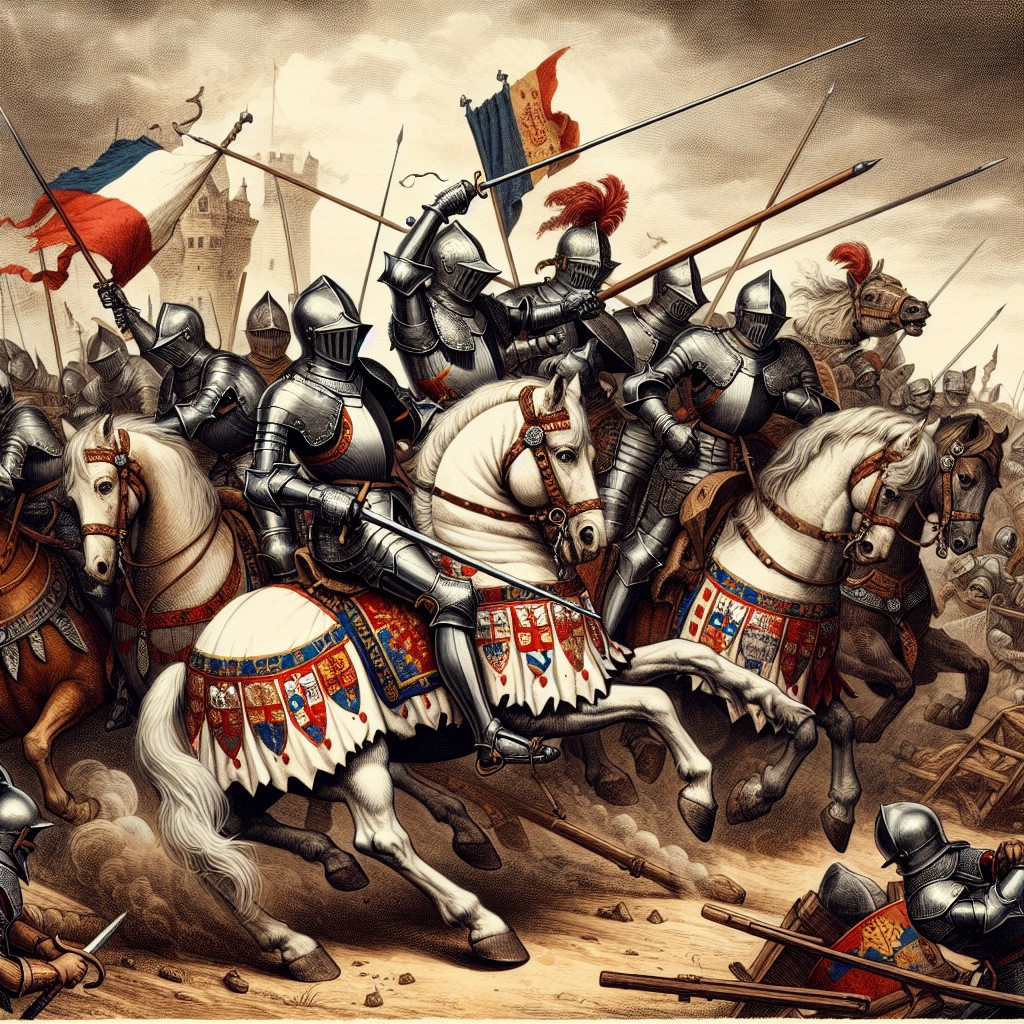The end of medieval heavy cavalry
The French defeat at the Battle of Pavia

Example of what French heavy cavalry looked like in the 16th century - AI generated image
Throughout history, certain events mark the end of an era, paving the way for new beginnings. The Battle of Pavia (1525) was one such event, signaling the decline of heavy cavalry on the battlefield and the rise of modern infantry equipped with pikes and arquebuses.
During the late Middle Ages and much of the Renaissance, the battlefield was dominated by the figure of the "heavy knight"—a soldier clad in layered armor, sometimes weighing up to 26 kg, mounted on an equally armored and ornamented horse. Wealth enabled these knights to equip themselves with the finest protection available, and their skill with the sword made them nearly impenetrable and unstoppable when facing lightly armed infantry. In many ways, they were the medieval equivalent of modern tanks.
However, with the advent of new military technology, the supremacy of medieval knights was challenged by the introduction of firearms. Though still imperfect in accuracy and slow to reload, these weapons could easily pierce heavy armor, diminishing the effectiveness of cavalry charges.
The Battle of Pavia, fought during the Italian War (1521–1526) between the French army, personally led by King Francis I of Valois, and the forces of Charles V of Habsburg, primarily composed of Landsknechts and Spanish soldiers, demonstrated the superiority of the emerging Renaissance military model. This battle marked a turning point in military strategy, as firearms became the dominant force over traditional melee weapons.
Despite having a numerical advantage, Francis I placed his faith in his renowned heavy cavalry—considered the finest in Europe—rather than his artillery. By positioning his cavalry in front of his cannons, he effectively rendered them useless. This tactical error proved disastrous. Spanish infantry armed with arquebuses decimated the French cavalry, resulting in a staggering loss of 12,000 men compared to only 500 on the opposing side. Ultimately, France was forced into a total surrender, and Francis I himself was taken prisoner.
Luigi Casali, Marco Galandra, La battaglia di Pavia 24 febbraio 1525, G. Iuculano, 1999
2025-02-23
Salvatore Ciccarello
